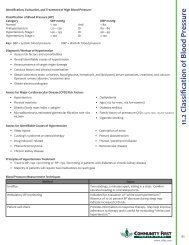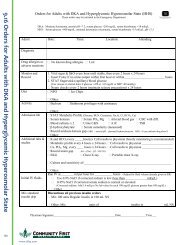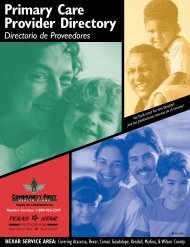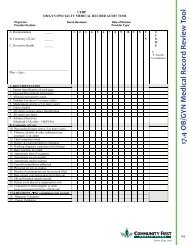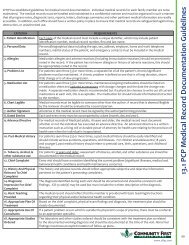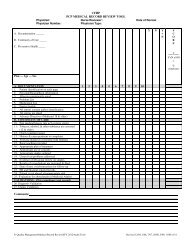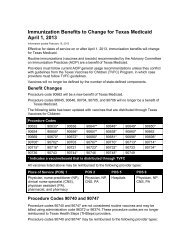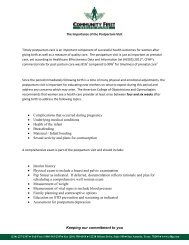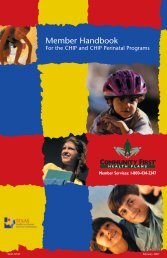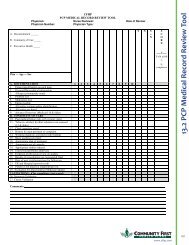Full Clinical Guidelines - Community First Health Plans.
Full Clinical Guidelines - Community First Health Plans.
Full Clinical Guidelines - Community First Health Plans.
Create successful ePaper yourself
Turn your PDF publications into a flip-book with our unique Google optimized e-Paper software.
FIGURE 16. STEPWISE APPROACH FOR MANAGING ASTHMA IN YOUTHS ≥12 YEARS OF AGE AND ADULTS<br />
Key: Alphabetical order is used when more than one<br />
treatment option is listed within either preferred or<br />
alternative therapy. ICS, inhaled corticosteroid; LABA, longacting<br />
inhaled beta 2 -agonist; LTRA, leukotriene receptor<br />
antagonist; SABA, inhaled short-acting beta 2 -agonist<br />
Notes:<br />
• The stepwise approach is meant to assist, not replace, the<br />
clinical decisionmaking required to meet individual patient<br />
needs.<br />
• If alternative treatment is used and response is inadequate,<br />
discontinue it and use the preferred treatment before<br />
stepping up.<br />
• Zileuton is a less desirable alternative due to limited<br />
studies as adjunctive therapy and the need to monitor<br />
liver function. Theophylline requires monitoring of serum<br />
concentration levels.<br />
• In step 6, before oral corticosteroids are introduced, a trial<br />
of high-dose ICS + LABA + either LTRA, theophylline, or<br />
zileuton may be considered, although this approach has<br />
not been studied in clinical trials.<br />
• Step 1, 2, and 3 preferred therapies are based on Evidence<br />
A; step 3 alternative therapy is based on Evidence A for<br />
LTRA, Evidence B for theophylline, and Evidence D for<br />
zileuton. Step 4 preferred therapy is based on Evidence B,<br />
and alternative therapy is based on Evidence B for LTRA<br />
and theophylline and Evidence D zileuton. Step 5<br />
preferred therapy is based on Evidence B. Step 6 preferred<br />
therapy is based on (EPR—2 1997) and Evidence B for<br />
omalizumab.<br />
• Immunotherapy for steps 2–4 is based on Evidence B for<br />
house-dust mites, animal danders, and pollens; evidence is<br />
weak or lacking for molds and cockroaches. Evidence is<br />
strongest for immunotherapy with single allergens. The role<br />
of allergy in asthma is greater in children than in adults.<br />
• Clinicians who administer immunotherapy or omalizumab<br />
should be prepared and equipped to identify and treat<br />
anaphylaxis that may occur.<br />
Managing Asthma Long Term<br />
45<br />
4.8 Stepwise Approach for Managing Asthma in Youth and Adults<br />
H EALTH PLANS<br />
www.cfhp.com<br />
25



